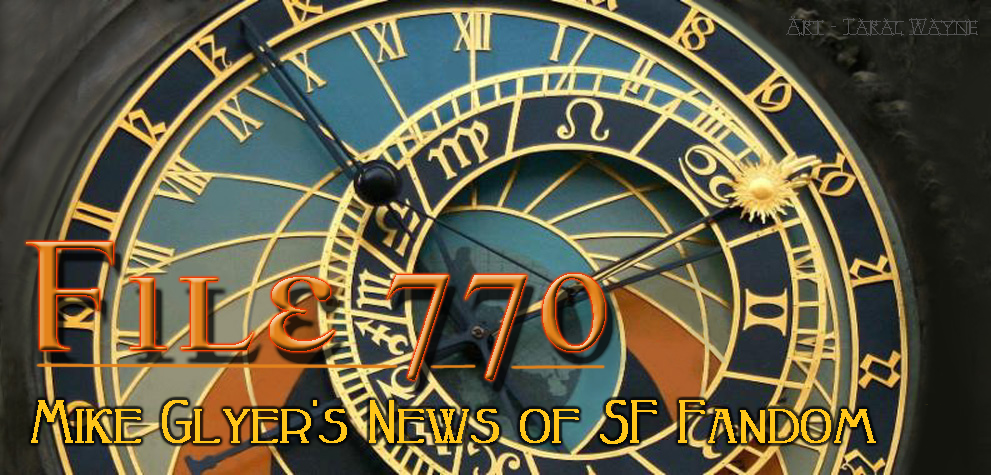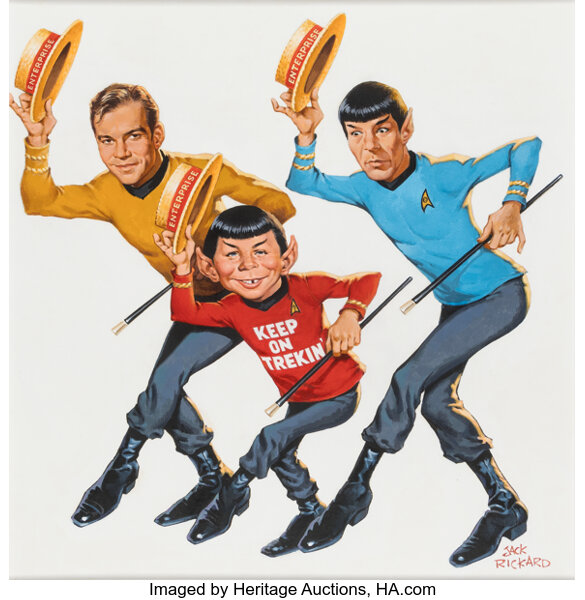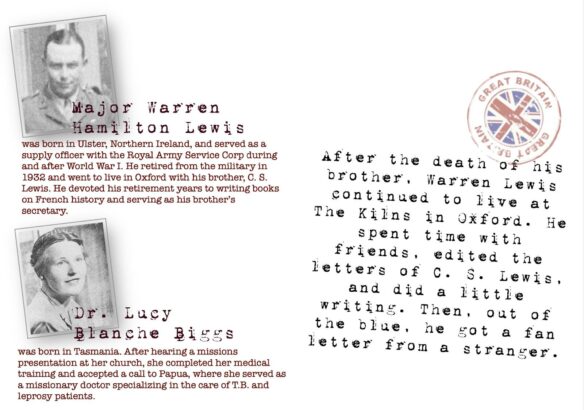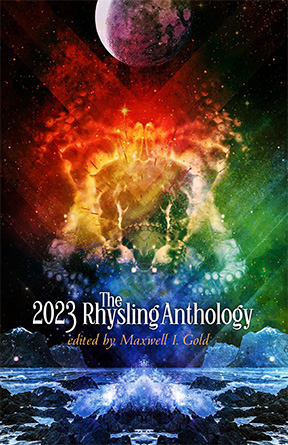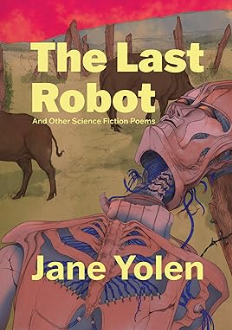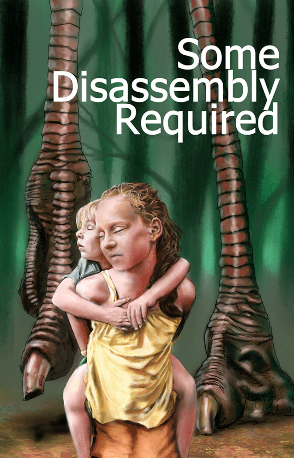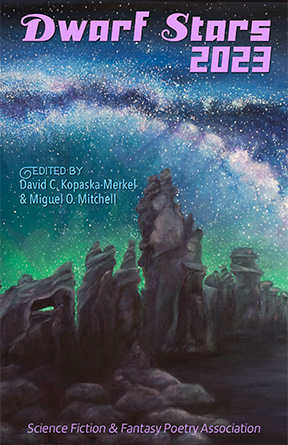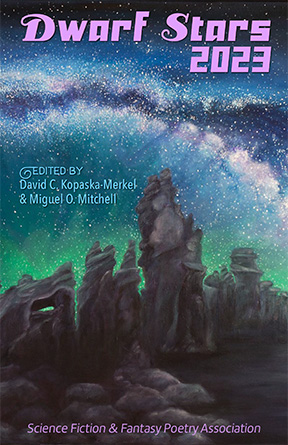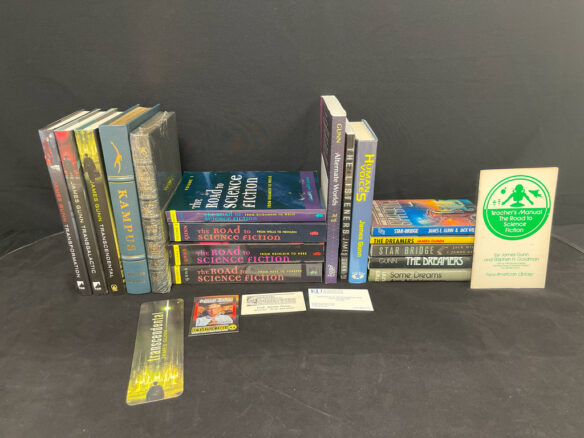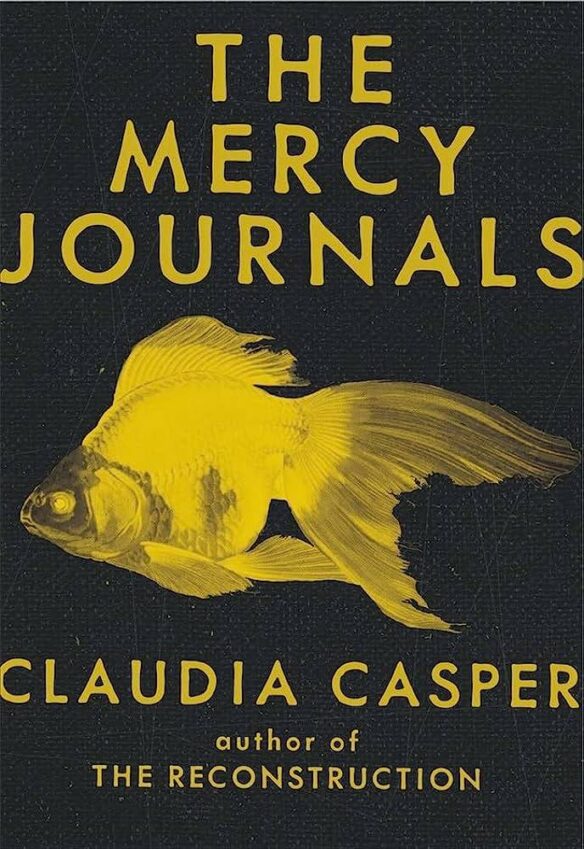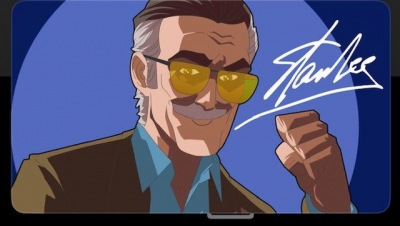
The Science Fiction and Fantasy Poetry Association (SFPA) has posted the Rhysling Award Long Lists of poems published in 2023.
One hundred and one members nominated 98 short poems and 62 long poems. Juries will now take these lists and narrow them down to 50 for the short category and 25 for the long category. The selected poems will appear in the 2024 Rhysling Anthology and will be on the ballot for SFPA members to vote on.
The jury will have their selections made no later than April 30. The Anthology will be sent shortly after that date, and voting will begin July 1.
SHORT POEMS (98 nominees)
- Alternating Current • F. J. Bergmann • North American Review Vol 308 No 1
- Apposite and Opposite • Michael Bailey • HWA Poetry Showcase X
- As Does the Crow • Beth Cato • Uncanny 53
- As the Night Sky Burns • Eugen Bacon • Texture of Silence (Independent Legions Publishing))
- Attn: Prime Real Estate Opportunity! • Emily Ruth Verona • Under Her Eye: A Women in Horror Poetry Collection Volume II
- Bathsheba’s Corsage • Elena Sichrovsky • The Deadlands 30
- The Beauty of Monsters • Angela Liu • Small Wonders 1
- Beloved Death • Rebecca Marjesdatter • The Owl Kingdom and Other Poems
- Binary Star System • Lae Astra • Strange Horizons November
- The Blight of Kezia • Patricia Gomes • HWA Poetry Showcase X
- The Broken Blade • Denise Dumars • JOURN-E, The Journal of Imaginative Literature 2.1
- Chemical Rebalance For Young Cyborg Housewives • Mahaila Smith • Radon Journal 4
- The chittering moon • P S Cottier • Body of Work, ed. C.Z. Tacks (Canberra Speculative Fiction Guild)
- Conspiracy Theories • Vince Gotera • The Ekphrastic Review May
- The Day We All Died, A Little • Lisa Timpf • Radon 5
- The Dead Man • Robert Wooten • Dreams and Nightmares 125
- Deadweight • Jack Cooper • Propel 7
- Dear Mars • Susan L. Lin • The Sprawl Mag 1.2
- Dispatches from the Dragon’s Den • Mary Soon Lee • Star*Line 46.2
- Dr. Jekyll • West Ambrose • Thin Veil Press December
- Dracula Considers Writing a Memoir • LindaAnn LoSchiavo • Quail Bell Magazine October
- Dragon Sighting • Patricia Hemminger • Carmina Magazine September
- Einstein’s Eyes • G. O. Clark • Dreams and Nightmares 123
- First Eclipse: Chang-O and the Jade Hare • Emily Jiang • Uncanny 53
- Five of Cups Considers Forgiveness • Ali Trotta • The Deadlands 31
- For the attention of my future self • Brian Hugenbruch • Haven Speculative 12
- Gods of the Garden • Steven Withrow • Spectral Realms 19
- A Good Soul, Really, When You Know Them • Elizabeth R. McClellan • Worlds of Possibility October
- The Goth Girls’ Gun Gang • Marisca Pichette • The Dread Machine 3.2
- Guiding Star • Tim Jones • Remains to be Told: Dark Tales of Aotearoa, ed. Lee Murray (Clan Destine Press)
- Hallucinations Gifted to Me by Heatstroke • Morgan L. Ventura • Banshee 15
- The Hatter Shakes • Christina M. Rau • Neologism Poetry Annual April
- heart sings to changeling heart • Rasha Abdulhadi • The Sprawl Mag • 1.2
- Hell Rising • Michael Pendragon • Evermore 2
- hemiplegic migraine as willing human sacrifice • Ennis Rook Bashe • Eternal Haunted Summer Winter Solstice
- Hi! I am your Cortical Update! • Mahaila Smith • Star*Line 46.3
- Hora Somni • Tiffany Morris • Uncanny Magazine 54
- How Noah Saved the Dinosaurs–a Litany • David Clink • The Black Ship
- How to Help Hubble • Mary Soon Lee • How to Navigate Our Universe
- How to Make the Animal Perfect? • Linda D. Addison • Weird Tales 100
- How to Plant an Olive Tree on the Moon When All Is Lost • Elena S. Kotsile • The Future Fire June
- I Dreamt They Cast a Trans Girl to Give Birth to the Demon • Jennessa Hester • HAD October
- In Your Dreams • Silvatiicus Riddle • Spectral Realms 18
- Invasive • Marcie Lynn Tentchoff • Polar Starlight 9
- Janeway Was Absolutely Right to Kill Tuvix • Jordan Hirsch • Strange Horizons July
- kan-da-ka • Nadaa Hussein • Apparition Lit 23
- Language as a Form of Breath • Angel Leal • Apparition Lit October
- The Lantern of September • Scott Couturier • Spectral Realms 19
- Let Us Dream • Myna Chang • Small Wonders 3
- Look into the Christmas Box • Amabilis O’Hara • Whispers from Beyond (Crystal Lake Publishing)
- Made of Glass • Anna Madden • Haven Speculative 12
- The Magician’s Foundling • Angel Leal • Heartlines Spec 2
- The Man with the Stone Flute • Joshua St. Claire • Abyss & Apex 87
- Mass-Market Affair • Casey Aimer • Star*Line 46.4
- Masters of the Future • Bruce Boston • Asimov’s July/August
- Me • Jamal Hodge • Qualia Nous 2
- Metal Lullaby • Herb Kauderer • The Book of Sleep
- Mom’s Surprise • Francis W. Alexander • Tales from the Moonlit Path June
- Mother Hubble Tames the Unicorn Black Hole • Sandra Lindow • Dreams & Nightmares 125
- Much After the Fact • Zebulon Huset • Phantom Kangaroo 29
- A Murder of Crows • Alicia Hilton • Ice Queen 11
- My Grotesque Treasure • Abi Marie Palmer • Star*Line 46.4
- My Mother Dreams of Endlessness • Angel Leal • Strange Horizons December
- No One Now Remembers • Geoffrey Landis • Fantasy and Science Fiction Nov./Dec.
- orion conquers the sky • Maria Zoccula • On Spec 33.2
- Patchwork Girl • Deborah L. Davitt • HWA Poetry Showcase X
- Pines in the Wind • Karen Greenbaum-Maya • The Beautiful Leaves (Bamboo Dart Press)
- The Poet Responds to an Invitation from the AI on the Moon • T.D. Walker • Radon Journal 5
- Poul Anderson’s Lay • Frida Westford • Speculative Poetry and the Modern Alliterative Revival: a Critical Anthology
- A Prayer for the Surviving • Marisca Pichette • Haven Speculative 9
- Pre-Nuptial • F. J. Bergmann • The Vampiricon (Mind’s Eye Publications)
- The Problem of Pain • Anna Cates • Eye on the Telescope 49
- The Return of the Sauceress • F. J. Bergmann • The Flying Saucer Poetry Review February
- Rubik’s Cube • Colleen Anderson • The Lore of Inscrutable Dreams (Yuriko Publishing)
- Sea Change • David C. Kopaska-Merkel and Ann K. Schwader • Scifaikuest May
- Seed of Power • Linda D. Addison • The Book of Witches ed. Jonathan Strahan (Harper Collins)
- Self-Internalized • Maxwell I. Gold • Bleeding Rainbows and Other Broken Spectrums June
- Shipwrecker’s Ball • Alannah Guevara • The Crow’s Nest December
- The Singing Girl • Kim Salinas Silva • Abyss & Apex 87
- Sleeping Beauties • Carina Bissett • HWA Poetry Showcase X
- Solar Punks • J. D. Harlock • The Dread Machine 3.1
- Song of the Last Hour • Samuel A. Betiku • The Deadlands 22
- Sphinx • Mary Soon Lee • Asimov’s September/October
- Storm Watchers (a drabbun) • Terrie Leigh Relf • Space & Time
- A Stranger There • Eugen Bacon • Texture of Silence (Independent Legions Publishing)
- Sunflower Astronaut • Charlie Espinosa • Strange Horizons July
- Tea Leaf Reading • Juleigh Howard-Hobson • Myth and Lore 7
- Three Hearts as One • G. O. Clark • Asimov’s May/June
- To the Emperor’s Nightingale • Adele Gardner • Collected Winning Poems from the Poetry Society of Virginia
- Troy • Carolyn Clink • Polar Starlight 12
- Twenty-Fifth Wedding Anniversary • John Grey • Medusa’s Kitchen September
- Uncensored Footage of the Cyborg at the U.S. Embassy • Abu Bakr Sadiq • Boston Review June
- Under World • Jacqueline West • Carmina Magazine September
- Walking in the Starry World • John Philip Johnson • Orion’s Belt May
- We Are Orphans • Avra Margariti • Heartlines Spec Fall/Winter
- When We Could Finally See Our Ribcages • Angela Nicole Duggins • Chrome Baby 120
- Whispers in Ink • Angela Yuriko Smith • Whispers from Beyond (Crystal Lake Publishing)
- Whole World • Colleen Anderson • Polar Starlight 12
LONG POEMS (62 nominees)
- Archivist of a Lost World • Gerri Leen • Eccentric Orbits 4
- As the witch burns • Marisca Pichette • Fantasy 87
- Below the Bible Belt • Lauren Scharhag • Thanatos 2
- Between Scylla and Charybdis • Carina Bissett • The Future Fire June
- Brigid the Poet • Adele Gardner • Eternal Haunted Summer Summer Solstice
- Chantress • Akua Lezli Hope • Unioverse
- Coding a Demi-griot (An Olivian Measure) • Armoni “Monihymn” Boone • Fiyah 26
- Consent For Facial Reconstruction With the Shelley Concepts Inc Custom Patient-Fitted Reconstruction Prosthesis • Katie R. Yen • Apparition Lit 21
- Cradling Fish • Laura Ma • Strange Horizons May
- The Creature from the Black Lagoon is Your Father • Brandon O’Brien • Strange Horizons October
- Cupid Visits the Archery Club • Lisa Timpf • Illumen Summer
- Don’t Make me Come Back • Gerri Leen • Eccentric Orbits 4
- Dragons Got Wings • Ruth Berman • Dreams and Nightmares 124
- Dream Visions • Melissa Ridley Elmes • Eccentric Orbits 4
- Eight Dwarfs on Planet X • Avra Margariti • Radon Journal 3
- The Empress Chides the Hermit • Ali Trotta • Small Wonders 0
- The Giants of Kandahar • Anna Cates • Abyss & Apex 88
- Glitterman • Richard Stevenson • The Flying Saucer Poetry Review February
- The Grey Witch’s Haibun: Japan 1870 – 1871 • Calie Voorhis • Strange Horizons August
- Had She Lived • Lori R. Lopez • Dreams and Nightmares 124
- Hades Baedeker • Ken Chen • Granta 27
- Hamelin in the Distance • Maria Schrater • Heroic Fantasy Quarterly 58
- How A Xenomorph Knows • Annika Barranti Klein • Kaleidotrope winter
- How to Haunt a Northern Lake • Lora Gray • Uncanny 55
- How to Make Love to a Saguaro Cactus • Spencer Nitkey • Cream Scene Carnival August
- hyphae hot pot • D.A. Xiaolin Spires • Eye to the Telescope 48
- I Was on My Way to Tell You There Is a Vast Machine Intelligence Plotting Our Downfall, Or, the Time Machine • David Clink • The Black Ship
- Imposter Syndrome • Robert Borski • Dreams and Nightmares 124
- The Incessant Rain • Rhiannon Owens • Evermore 3
- Interrogation About A Monster During Sleep Paralysis • Angela Liu • Strange Horizons November
- Knight of Wands, Six of Swords • Ali Trotta • Uncanny 54
- The Lay of Géac Ettinfell • Adam Bolivar • Speculative Poetry and the Modern Alliterative Revival: A Critical Anthology December
- Little Brown Changeling • Lauren Scharhag • Aphelion 283
- Lost Lines from Ariel’s Song • Gretchen Tessmer • Fantasy and Science Fiction 768
- Lying Flat • Lynne Sargent • Strange Horizons October
- A Mere Million Miles from Earth • John C. Mannone • Altered Reality April
- The mirror-backed cabinet in oak • Richard Magahiz • Otoliths 69
- Never an Oasis • Brian Hugenbruch • Star*Line 46.1
- The Nomad • Marge Simon • Fantasy and Science Fiction Mar./Apr.
- Pilot • Akua Lezli Hope • Black Joy Unbound eds. Stephanie Andrea Allen & Lauren Cherelle (BLF Press)
- Protocol • Jamie Simpher • Small Wonders 5
- Robin Hood’s Larder’s Torn Roots • Kim Malinowski • Fairy Tale Magazine Spring
- St. Sebastian Goes To Confession • West Ambrose • Mouthfeel 1
- She Seeks a Home • Beth Cato • Small Wonders 0
- Skinner • Frank Coffman • What the Night Brings August
- Sleep Dragon • Herb Kauderer • The Book of Sleep (Written Image Press)
- Slow Dreaming • Herb Kauderer • The Book of Sleep (Written Image Press)
- The Thing That Leaps • Elis Montgomery • Apparition Lit 23
- To the Far-Shooting God of Poetry, Healing, and Sunlight • Calliope Mertig • Eternal Haunted Summer Summer Solstice
- Tomorrow I’ll Be Five • Jamal Hodge • Whispers from Beyond (Crystal Lake Publishing)
- Troop No. 80085 • Marisca Pichette • The Deadlands 32
- The Truth Is As Intimate As The Teeth That Bit Your Legs Off First • Elizabeth McClellan • Sand, Salt, Blood: An Anthology of Sea Horror
- The Two of Coins • Lauren Scharhag • Decomp Journal 6
- Value Measure • Joseph Halden and Rhonda Parrish • Dreams and Nightmares 125
- A Weather of My Own Making • Nnadi Samuel • Silver Blade 56
- Welcoming the New Girl • Beth Cato • Penumbric October
- What You Find at the Center • Elizabeth R McClellan • Haven Spec Magazine 12
- When the Honeymoon is Over • Lauren Scharhag • Aphelion 282.27
- The Witch Makes Her To-Do List • Theodora Goss • Uncanny 50
- Would You, Empress • Tara Campbell • Voices of the Winter Solstice December
- The Year It Changed • David C. Kopaska-Merkel • Star*Line 46.4
